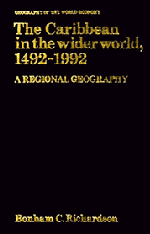2 results in Geography of the World-Economy

The Caribbean in the Wider World, 1492–1992
- A Regional Geography
-
- Published online:
- 10 November 2010
- Print publication:
- 16 January 1992

South East Asia in the World-Economy
-
- Published online:
- 22 September 2009
- Print publication:
- 26 July 1991

